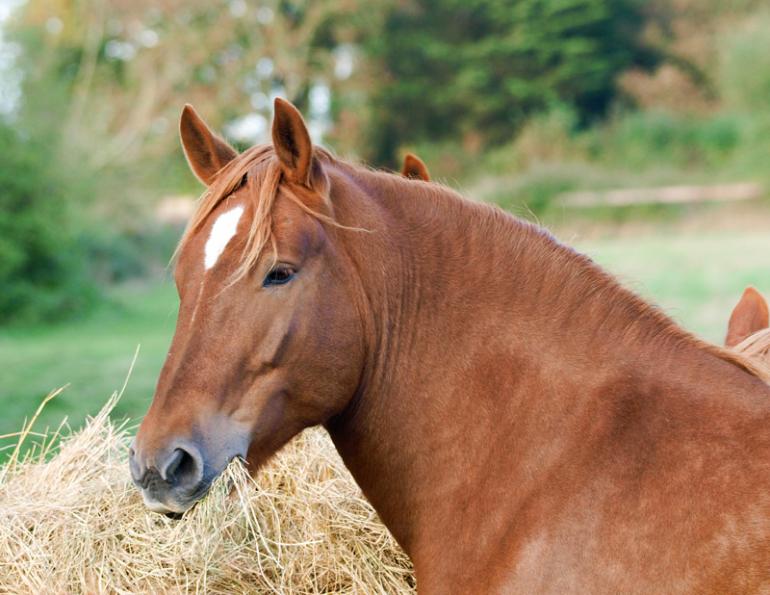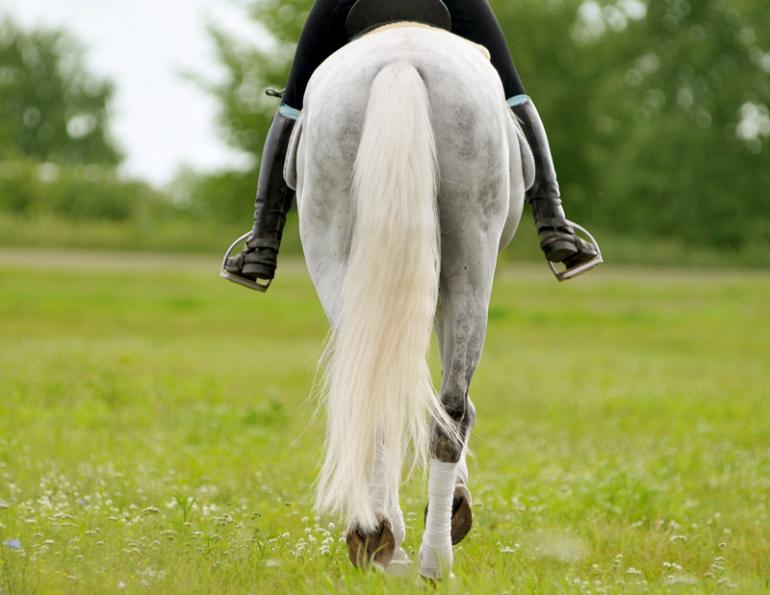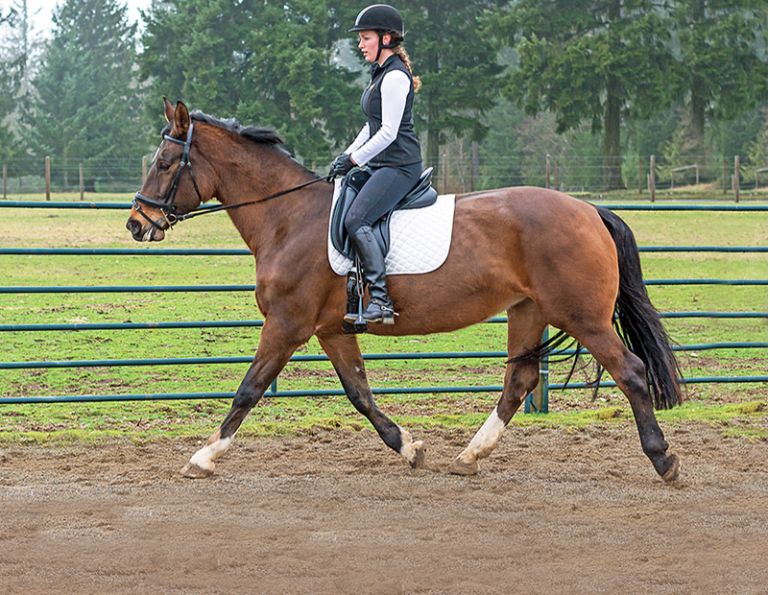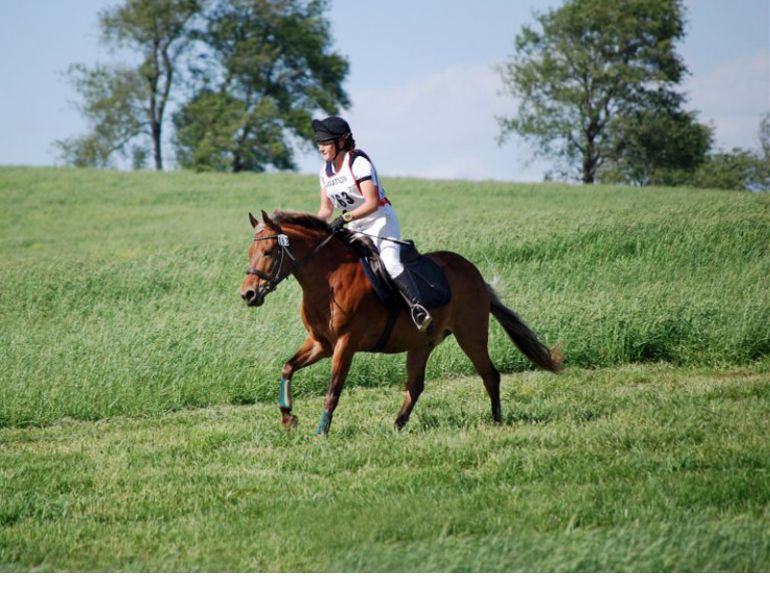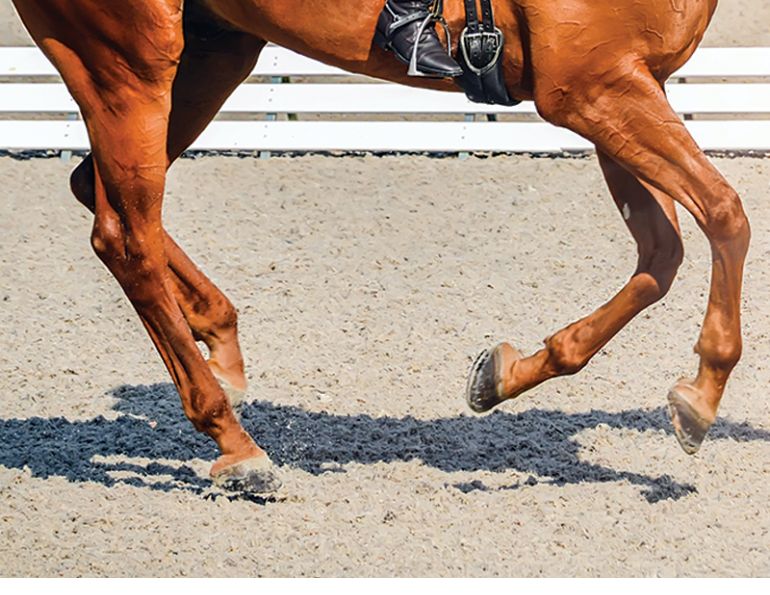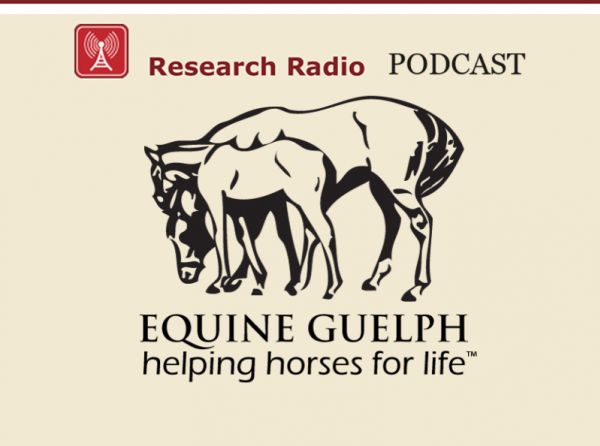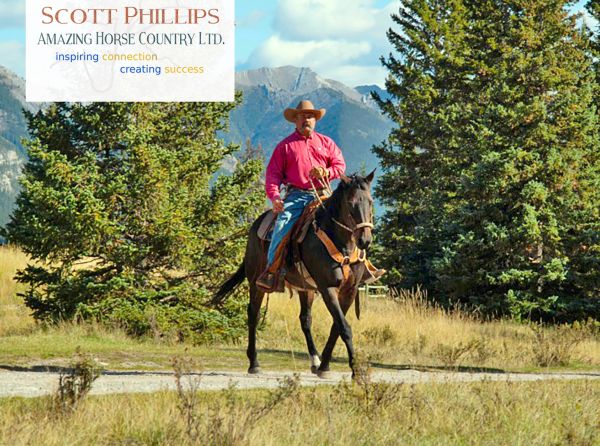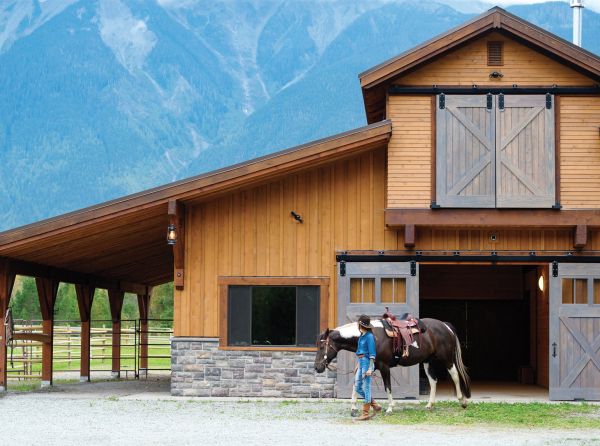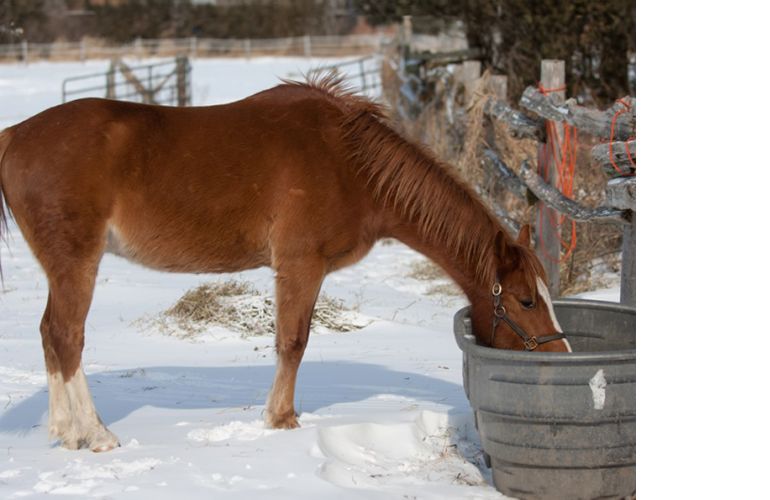By Sandra Verda-Zanatta, Level 3 High Performance Coach
Rider fitness is fundamental to achieving a harmonious partnership with your horse and improving overall performance together. Regardless of the equestrian discipline, physical condition directly influences the rider’s ability to stay balanced in the saddle and communicate effectively with the horse. Core strength, coordination and flexibility are the pivotal components contributing to a secure seat and refined aids. Whether it be the precision of dressage, the agility of jumping, or the endurance required for eventing or trail riding, every equestrian discipline requires varying levels of physical exertion and skill. A tailored fitness program ensures that riders can meet the specific demands of each sport.
Horses are incredibly perceptive animals, capable of sensing even the subtlest shifts in their rider’s weight, posture, and contact. A well-balanced rider provides a dynamically stable platform, allowing the horse to move freely with expression and fluidity. Conversely, an unbalanced rider can create confusion and discomfort for the horse, hindering its ability to use its body with ease and efficiency. The influence of a rider’s posture and position on the horse is critical, directly shaping the communication system. A rider’s posture serves as a language that conveys cues and commands to the horse, dictating direction, speed, and level of engagement. A balanced and aligned posture creates an independent seat and allows for correct leg placement and subtle rein aids, fostering confidence and a sense of security for both horse and rider, while significantly influencing the horse’s movement, steadiness in the contact, and self-carriage. A well-positioned rider encourages the horse to engage its hindquarters, achieve proper collection, and execute manoeuvres with precision.
Related: Support Your Back When Riding Horses
In order to maintain a correctly aligned, secure body position, engaging the core muscles is paramount. They provide a stable foundation aiding in the absorption of the horse’s movement. The deep abdominal muscles, the transverse abdominis, and pelvic floor work to support the rider’s spine, while the obliques assist in lateral stability. The muscles of the back, particularly the erector spinae, play a crucial role in maintaining an upright posture and allowing subtle communication with the horse through the seat. Leg muscles, such as the adductors and quadriceps, need to be firm and supple to provide effective aids with varying intensity and maintain proper alignment. The rider’s ability to finely tune and coordinate these muscle groups is essential for progressive training and positive performance results.
Mounted exercises offer a variety of benefits for riders, encompassing both physical and skill-related advantages and significantly contributing to rider stability and balance. They can build strength, improve coordination, and teach riders to isolate parts of their body independently, while targeting muscles necessary to maintain correct posture and alignment. As riders practice the exercises in this article, they gain body awareness and learn how to engage their core, the first step of many to developing a solid and centered seat.
Mounted lunge lessons play a crucial role in improving a rider’s position, as they provide an opportunity to focus entirely on their own body alignment and balance, without having to train or control their horse. It enables them to develop a deep, independent seat, refine their balance, and become more attuned to the subtle nuances of their body’s movements in harmony with the horse. It is important to use safe, reliable, well-trained horses for mounted lunge lessons and the handler/lunger should be experienced and skilled in the safety aspects of correct lunging practices.
The journey of a rider in any discipline transcends technical proficiency; it is a dynamic and ongoing evolution that demands an open mind and holistic approach to training. Beyond mastering specific exercises, I encourage all riders to recognize the interconnectedness of their fitness, posture, communication, and unique bond with their horse, by embracing a training approach that not only enhances their individual skills but encourages a partnership characterized by respect, trust, understanding, and teamwork. It is imperative for riders to view their development as an ongoing process. Just as our equine partners continuously adapt and learn, so too must riders remain committed to refining their skills. The pursuit of excellence in equestrianism is challenging and marked by dedication to continual improvement. So, let every stride be an opportunity for growth, every mounted exercise a chance to build your partnership, and every challenge a stepping stone towards becoming the accomplished rider you strive to be!
Related: How to Master the Sitting Trot
Exercise notes:
- Flex bands – use light to medium strength.
- All of these exercises promote body awareness and improve riders’ ability to use abdominal muscles to develop a core connection, resulting in a more stable position in the saddle.
- Flex bands improve the riders’ hand and arm position to develop feel and elasticity, resulting in more consistent contact through the reins to the horse’s mouth.
- Flex bands encourage soft, steady arms and hands with elbows slightly in front of hips, teaching the rider to feel what the rest of their body is doing and the influence it has over the horse.
- Forward thinking arm/hand position encourages horses to seek the contact and move fluidly though their body, decreasing tension, and promoting relaxation.
- Flex bands teach riders the ability to give the reins forward without collapsing or falling forward with the upper body, therefore helping the horse maintain correct balance and self-carriage.
- The exercises can be practiced while riding on the flat or in a mounted lunge lesson on a safe, reliable horse with an experienced handler/lunger.
- Riders can hold reins for all exercises and can progress from halt – walk - trot - canter as skill level improves and it is safely appropriate.
Related: Fitness for Kids
EXERCISES
Exercise 1: Arm press forward — band around waist
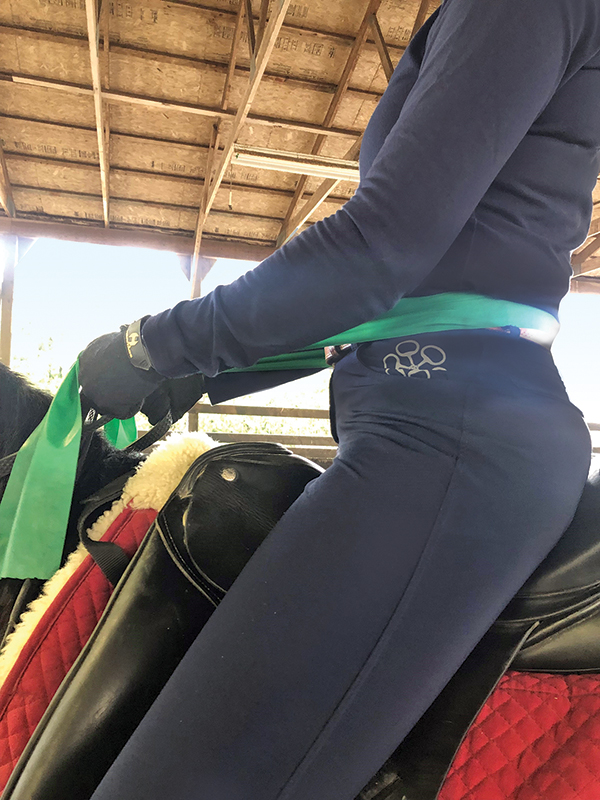
- Hold band and press the hands forward towards the horse’s neck just in front of the withers, maintaining upright posture and a seat deep in the saddle — you will feel a slight contraction of your core as you resist;
- Hold for five strides and then relax arms back to neutral position keeping slight tension on the band — repeat 10 times each direction;
- Progress to pressing one hand forward at a time.
Related: Ride with Balance, Flexibility & Strength
Exercise 2. Arm press forward — band under seat bones
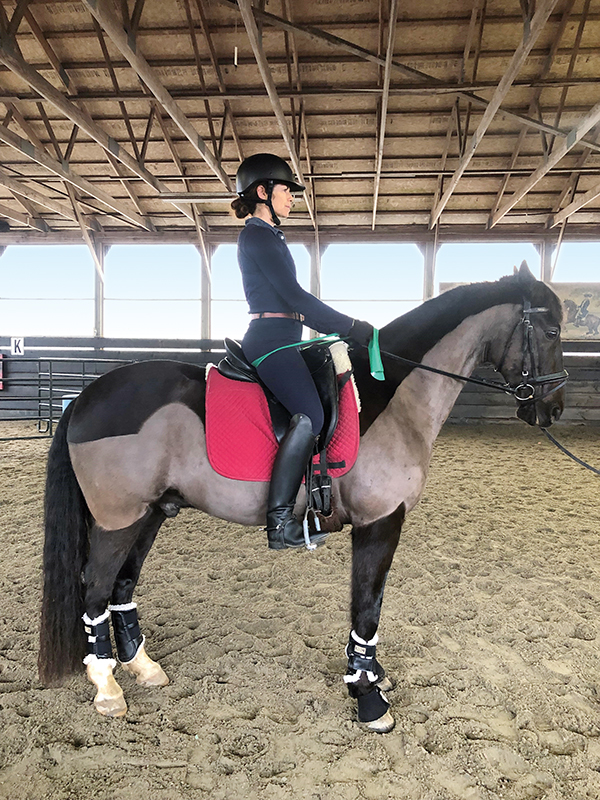
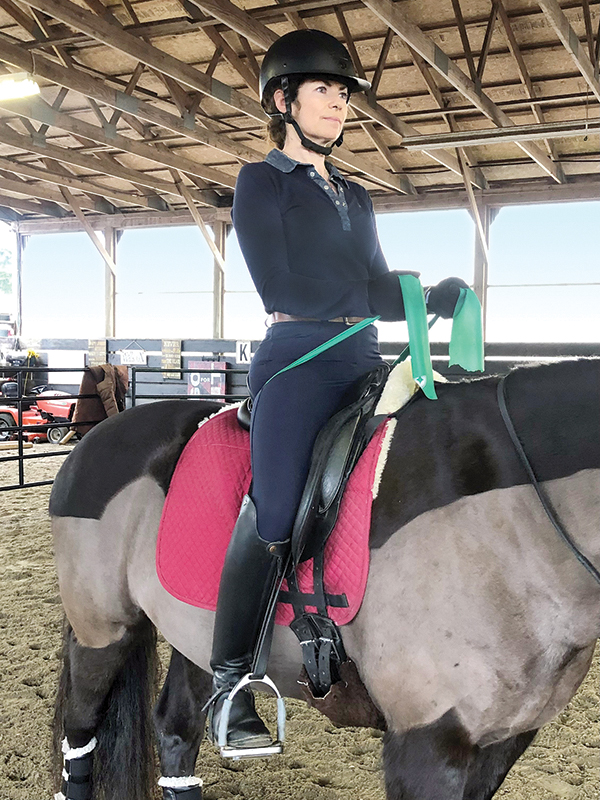
- Sitting on the band, repeat Exercise 1 — you will feel a deeper core contraction;
- This exercise also encourages the rider to become more aware of seat bones and connectedness in the saddle.
Related: Develop a Stronger Riding Position
Exercise 3. Hands forward — band through D-rings

- Keep slight forward continuous pressure on the band — throughout your ride, this gives the rider’s hands stability in the correct position on either sides of the horse’s withers;
- This exercise teaches riders not to pull backwards and balance on the reins, but to develop balance in the body and feel elasticity in the elbows and symmetry in contact — both sides equal.
Related: Three Pre-Ride Stretches for Equestrians
Exercise 4. Correct hand position - flex band around wrists
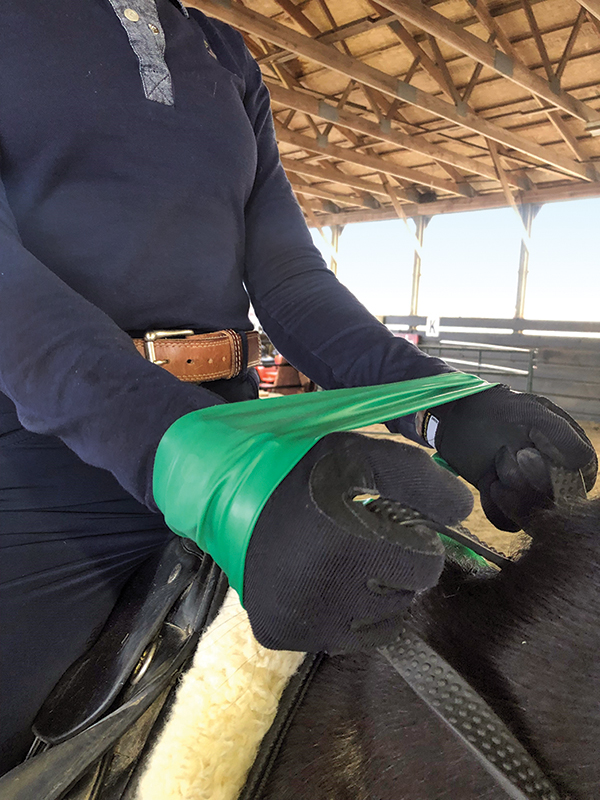
- Another way to improve hand position and arm alignment is to keep hands level and encourage the upper arm out from the shoulder to create a line from elbow to forearm to rein to bit;
- This exercise helps riders learn to use the rest of their body in conjunction with subtle rein aids and promotes symmetry and steadiness of contact. Just put it on and start riding!
Related: Pilates for Every Equestrian
Related: How to Fall Off a Horse
Photos are courtesy of Sandra Verda-Zanatta.




